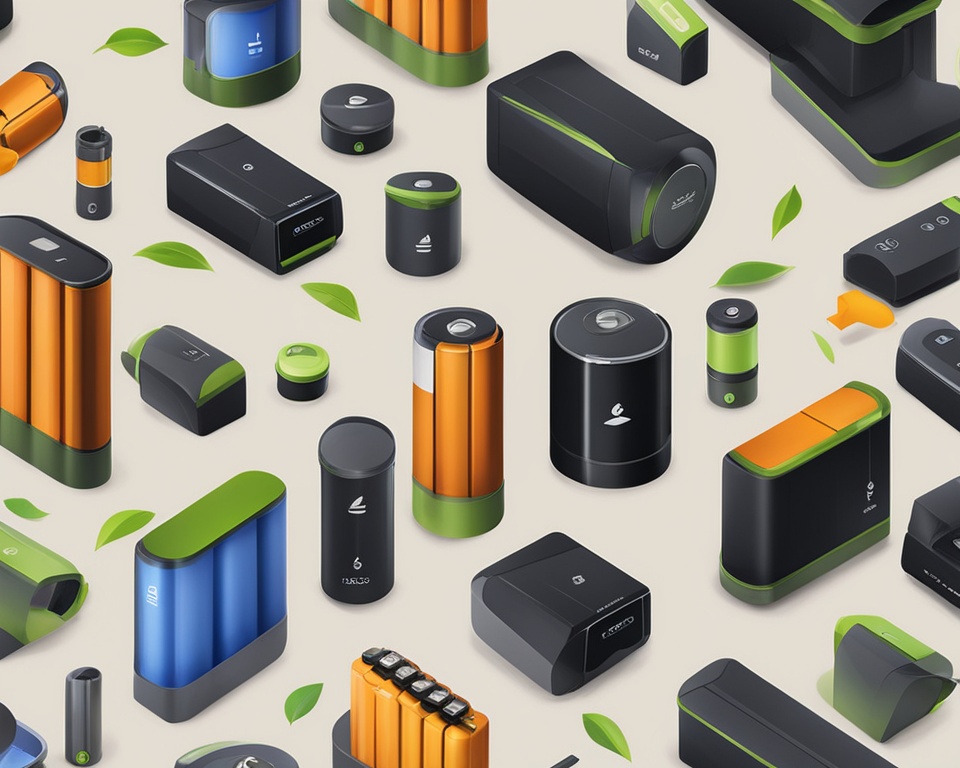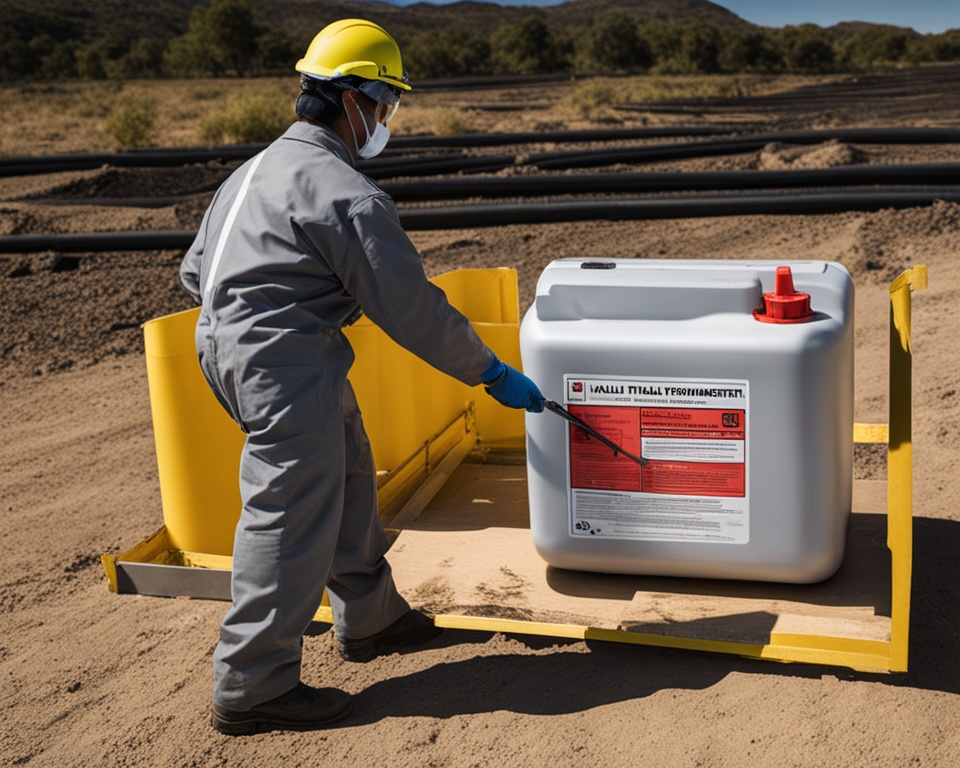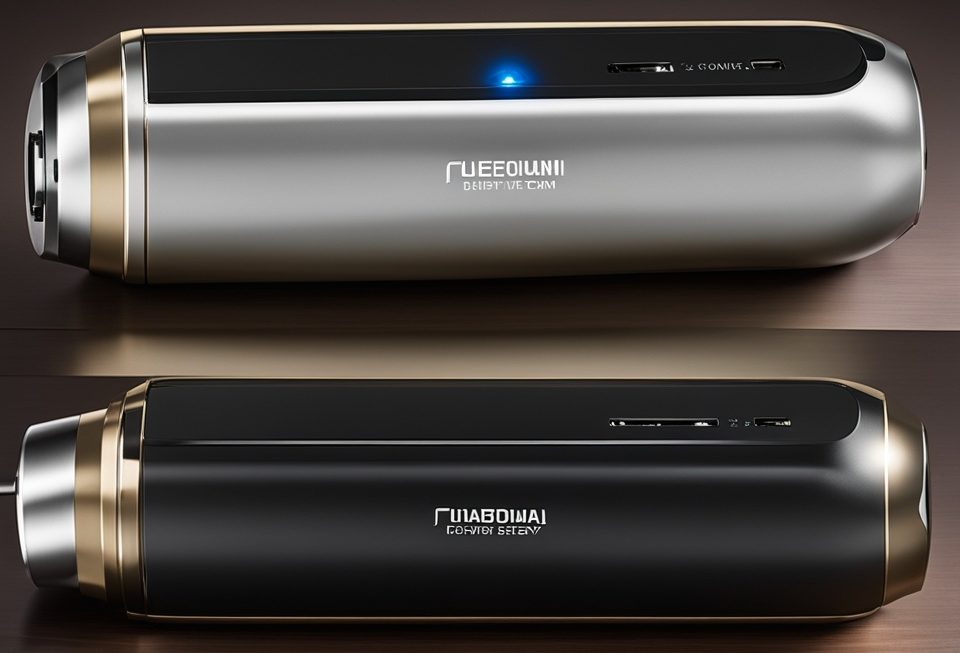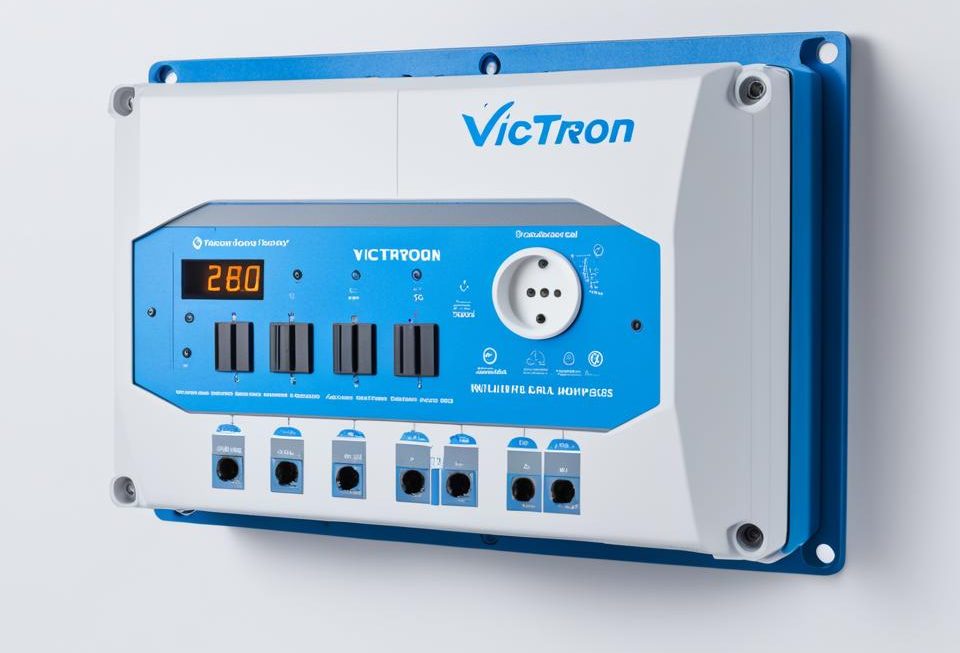Lithium batteries are key to today’s technology, powering everything from smartphones to electric cars. They offer unmatched power, efficiency, and reliability. This makes them crucial in our digital world. We’ll look into how lithium batteries have evolved, their technology, and where they’re used. We’ll see how they’re changing the future of energy and how we move around.
Read interesting things at : vetocellacvgummies
Key Takeaways
- Lithium batteries are the foundation of modern technology, powering a diverse range of devices.
- These batteries offer exceptional power density, efficiency, and reliability, making them essential in the digital age.
- The article delves into the evolution, technology, and applications of lithium batteries, highlighting their transformative impact on energy and mobility.
- Lithium-ion and lithium-polymer batteries are the primary technologies explored, with a focus on their unique characteristics and capabilities.
- The article covers the energy storage capabilities, power and energy density, and the role of battery management systems in ensuring safety and sustainability.
Introduction to Lithium Batteries
Lithium batteries have changed the way we store energy, powering many devices and new technologies. They are popular for their high energy density, long life, and efficiency. Let’s look at what makes lithium batteries special and their history.
What are Lithium Batteries?
Lithium batteries use lithium ions to store and release energy. These ions move between the electrodes during charging and discharging. This process lets lithium batteries pack a lot of power in a small space, making them ideal for many uses.
Brief History and Development
The idea of lithium battery technology started in the 1970s with early research on lithium as an anode material. Over the years, lithium-ion cells and lithium-polymer batteries got better, leading to their use in the 1990s. Now, lithium batteries power everything from phones and laptops to electric cars and renewable energy systems.
The growth of lithium battery technology aims for more energy, longer life, and safety. As we need more portable power and efficient storage, lithium batteries are key to the future of energy and tech.
Lithium Battery Technology
Lithium battery technology has seen huge improvements in recent years. Two main types stand out: lithium-ion (Li-ion) cells and lithium-polymer (Li-polymer) batteries. These technologies bring big benefits that are changing how we use batteries and store energy.
Lithium-Ion Cells
Lithium-ion cells are everywhere, from our phones to electric cars. They work by moving lithium ions between electrodes. These batteries are small but pack a lot of power, making them perfect for our tech-filled lives.
Lithium-Polymer Batteries
Lithium-polymer batteries are safer and more flexible than Li-ion ones. They use a solid electrolyte, not liquid, which lowers the chance of leaks and overheating. This makes them great for small devices and wearables.
| Feature | Lithium-Ion Cells | Lithium-Polymer Batteries |
|---|---|---|
| Energy Density | High | Moderate to High |
| Safety | Moderate | High |
| Flexibility | Limited | High |
| Cost | Lower | Higher |
Lithium battery tech has changed the game in energy storage. It’s led to many portable and stationary power solutions. As we need better energy storage, research in lithium-ion and lithium-polymer batteries will shape the future of this field.
Energy Storage Capabilities
Lithium batteries are known for their top-notch energy storage. They are measured by power density and energy density. These two metrics are key to understanding how well lithium batteries work, their size, and weight.
Power density shows how much power a battery can give out for its size or weight. It’s vital for things that need a lot of power, like power tools, electric cars, and heavy machinery. Thanks to new battery technology, lithium batteries are getting better and more useful for many uses.
Energy density tells us how much energy a battery can hold for its size or weight. It’s important for things that need to run a long time, like gadgets and electric cars. Lithium batteries store more energy per unit than other types, making them ideal for compact and light energy storage.
Improvements in power and energy density come from new materials and cell designs. Scientists and engineers are always finding new ways to make lithium batteries better. They’re looking at new materials, better electrolytes, and new cell designs to increase energy storage.
| Metric | Description | Significance |
|---|---|---|
| Power Density | The amount of power a battery can deliver per unit of weight or volume | Important for high-power applications like power tools, electric vehicles, and industrial equipment |
| Energy Density | The amount of energy a battery can store per unit of weight or volume | Crucial for applications requiring long runtimes, such as portable electronics and electric vehicles |
Lithium batteries have become key in many areas thanks to their growing power and energy density. As technology gets better, we’ll see even more improvements in lithium batteries. This will help them reach even more areas of our lives.
lithium battery
Lithium batteries are key to modern energy storage. They power many devices and systems. Their unique features make them a top choice for many uses.
Lithium batteries have a high energy density. This means they can hold a lot of energy in a small space. They’re perfect for things like portable gadgets, electric cars, and storing energy on a large scale. Their long life and quick charging make them very popular.
Lithium batteries can be customized for different needs. There are lithium-ion and lithium-polymer types, each with its own benefits. This lets manufacturers pick the best battery for their products.
“Lithium batteries have become the backbone of modern electronics, powering everything from our smartphones to electric cars. Their revolutionary energy storage capabilities have truly transformed the way we live and work.”
The need for efficient energy solutions is growing. Lithium battery technology is crucial for this. These batteries are changing how we use energy today and tomorrow.
Power Density and Energy Density
The world relies more on portable electronics and electric vehicles every day. Lithium batteries are key to this, and their performance matters a lot. Power density and energy density are two main factors that show how well these batteries work.
Understanding Power Density
Power density is about how much power a battery can give out for its size or weight. It’s vital for things that need a lot of power, like power tools, electric cars, and high-end gadgets. Thanks to new lithium battery tech, these batteries can charge faster and give more power at once.
Exploring Energy Density
- Energy density is about how much energy a battery can hold for its size or weight. It’s key for things that need to last a long time, like laptops, phones, and electric cars.
- Scientists and makers are always trying to make lithium batteries better by finding new materials and designs. This means batteries last longer and hold more energy, letting devices run longer on one charge.
- With high power and energy density, lithium batteries are great for many uses, from small gadgets to big energy storage systems.
Lithium battery tech is always getting better. Improving power and energy density is crucial for the future of energy storage and powering our world.
Rechargeable Cells: The Key to Sustainability
Lithium batteries can be recharged, making them key to sustainable energy. Rechargeable lithium-ion and lithium-polymer cells help store and use energy efficiently. This cuts down on waste and lowers the environmental impact of energy use. We’ll look at how rechargeable lithium batteries help us move towards a sustainable future. They’re used in renewable energy systems, electric vehicles, and portable devices.
At the heart of sustainable energy, rechargeable lithium batteries store energy from sources like solar and wind. This means we use less fossil fuel power. In electric vehicles, these batteries offer a clean alternative to gas engines. They help cut down on harmful emissions and support a greener transport system.
Rechargeable lithium batteries in devices like smartphones and laptops have also cut down on waste. They let users recharge their devices often, reducing the need to buy new ones. This leads to less waste and a smaller environmental impact.
| Feature | Benefit |
|---|---|
| Rechargeable capability | Reduces waste and environmental impact |
| Energy storage for renewable sources | Supports the transition to sustainable energy |
| Use in electric vehicles | Decreases greenhouse gas emissions |
| Application in portable electronics | Minimizes electronic waste |
Rechargeable lithium batteries are key to a sustainable future. They offer a reliable way to store energy. This makes them essential for using renewable energy, electric vehicles, and reducing waste. As technology gets better, rechargeable lithium batteries will play an even bigger role in sustainability.

Battery Management Systems
Battery management systems (BMS) are key to keeping lithium-based energy storage safe and efficient. They watch over the battery’s state and control it to avoid dangers and improve how well it works.
Monitoring and Control Functions
A top-notch BMS keeps an eye on the lithium battery’s charge, temperature, and health. It uses this info to adjust charging and discharging rates. This keeps the battery working well and safe.
The BMS also protects the lithium battery from overcharging, overdischarging, and overheating. This is very important in things like electric vehicles and big energy storage setups. If a battery fails, it can cause big problems.
| Function | Description |
|---|---|
| State of Charge Monitoring | Tracks the available capacity of the battery, ensuring optimal usage and preventing over-discharge. |
| Temperature Monitoring | Measures the battery’s temperature to prevent overheating and thermal runaway events. |
| Overcharge/Overdischarge Protection | Implements control mechanisms to stop charging or discharging when pre-set thresholds are exceeded. |
| Cell Balancing | Equalizes the charge levels across individual cells, improving overall battery performance and lifespan. |
Battery management systems make lithium-based energy storage reliable, safe, and efficient. They are vital in today’s world of lithium battery technology.
Applications of Lithium Batteries
Lithium batteries have changed how we power our world. They are now the top choice for many uses. From the gadgets we use every day to the electric cars changing how we travel, these batteries are key to our modern life.
Portable Electronics
Lithium batteries are perfect for powering portable devices because they pack a lot of energy and last a long time. Things like smartphones, laptops, and tablets use them. These batteries keep devices charged for a long time, changing how we stay connected and work while on the move.
Electric Vehicles
The move to electric cars is thanks to lithium battery progress. These batteries let electric cars go further on one charge. They are safe and last a long time, making electric cars reliable and efficient. As more people choose electric cars, lithium batteries lead this big change in the car industry.
| Application | Lithium Battery Advantages |
|---|---|
| Portable Electronics | High energy density, long lifespan, compact design |
| Electric Vehicles | Increased driving range, improved safety, reliable performance |
Lithium batteries are essential for our modern world. They power the devices we use every day and the cars that are changing how we travel.
Battery Safety Considerations
Lithium batteries are getting more popular in many industries. But, we must make sure they are safe. They have risks like thermal runaway and fire that we need to manage carefully.
Thermal Management
Lithium batteries can overheat easily. This can start a chain reaction called thermal runaway. This means the battery gets too hot and could catch fire or explode.
To stop this, we use advanced systems. These systems cool the battery and check its temperature. They help keep the battery safe and working right.
Overcharge and Overdischarge Protection
Lithium batteries can also be damaged by overcharging or running out of charge too fast. To stop this, we use smart battery management systems (BMS). These systems watch the charge level and stop it from getting too high or too low.
This keeps the battery safe and makes it last longer. It also lowers the chance of a big failure.
By focusing on safety, we’re making lithium batteries safer for use in many things. This includes everything from small gadgets to big electric cars.

Future Trends in Lithium Battery Technology
The lithium battery industry is always changing. Researchers and manufacturers are working hard to make them better, safer, and greener. Looking ahead, we see many new trends in lithium battery technology.
One big area of focus is making lithium batteries hold more energy and power. Scientists are looking into new materials and battery types. This could lead to smaller, more powerful batteries for things like phones and cars.
At the same time, batteries are getting smarter. They’re using advanced sensors and data analysis to manage themselves better. This means they can work more efficiently and safely, making them last longer.
As we move towards using more renewable energy, lithium batteries will be key for storing power. They can work with solar and wind energy to make our energy systems more reliable and green.
The future of lithium battery technology looks bright. It has the potential to change many industries and improve our lives. It could help us live in a more sustainable way.
Environmental Impact and Recycling
Lithium batteries are becoming more popular, which means we need to think about their effect on the environment. Making them and using them can harm the planet. We must find ways to make them better and recycle them to protect our environment.
Sustainable Practices
Companies are working hard to make lithium batteries better for the planet. They’re using less energy and trying to make batteries last longer. They also want to reuse parts of the battery to create less waste.
Recycling Programs
Recycling is key to reducing the harm from lithium batteries. These programs take out valuable materials like lithium and cobalt from old batteries. This helps us use less natural resources and supports a greener future.
| Recycling Process | Recovered Materials | Environmental Benefits |
|---|---|---|
| Mechanical separation | Lithium, cobalt, nickel | Reduced landfill waste, conservation of natural resources |
| Hydrometallurgical extraction | Lithium, cobalt, nickel, copper | Efficient material recovery, decreased environmental pollution |
| Pyrometallurgical processing | Lithium, cobalt, nickel, copper, aluminum | High-purity material reclamation, decreased landfill disposal |
By using sustainable methods and recycling, the lithium battery industry can lessen its environmental impact. This helps us move towards a more sustainable economy. It ensures that this important technology can be used for a long time.
Regulatory Landscape and Standards
The fast growth and wide use of lithium batteries have led to strict rules and safety standards. These rules make sure we use this technology safely and responsibly. This section looks at the main rules and standards for making, moving, and getting rid of lithium-based energy storage systems.
These rules lower risks, keep things safe, and help lithium batteries grow in different areas. They also tackle new worries and improve how things are done, making sure the industry moves forward responsibly.
Regulatory Frameworks and Industry Standards
World governments and groups have made many regulations and standards for the lithium battery industry. These include:
- UN Recommendations on the Transport of Dangerous Goods: These set rules for safely moving lithium batteries
- IEC 62133: This is an international safety standard for batteries with alkaline or other non-acid electrolytes
- UL 1642 and UL 2054: These are safety rules for lithium batteries and packs in the US
- UN 38.3 Testing: Batteries must pass this test before being shipped internationally
These rules make sure lithium batteries are made, used, and thrown away safely and with care for the planet.
| Regulation/Standard | Description |
|---|---|
| UN Recommendations on the Transport of Dangerous Goods | These set rules for safely moving lithium batteries |
| IEC 62133 | This is an international safety standard for batteries with alkaline or other non-acid electrolytes |
| UL 1642 and UL 2054 | Safety standards for lithium batteries and packs in the US |
| UN 38.3 Testing | This is a must-pass test for lithium batteries going internationally |
Following these regulations and standards, the lithium battery industry can keep growing. It can do so while focusing on safety and being green.
Conclusion
Lithium batteries are key to modern tech, powering many devices and helping us move towards sustainable energy. This piece looked into their growth, tech, and uses. It highlighted their big role in the digital era and the future of transport and green energy.
The need for lithium batteries is rising, and new improvements in materials and safety will make them better. This will make them even more efficient and good for the planet. They are becoming the top choice for many uses in the future.
Lithium batteries are essential for our daily lives, from charging our phones to driving electric cars and supporting green energy. Looking ahead, the growth and use of this tech will be key. It will help make our world more sustainable and advanced.



